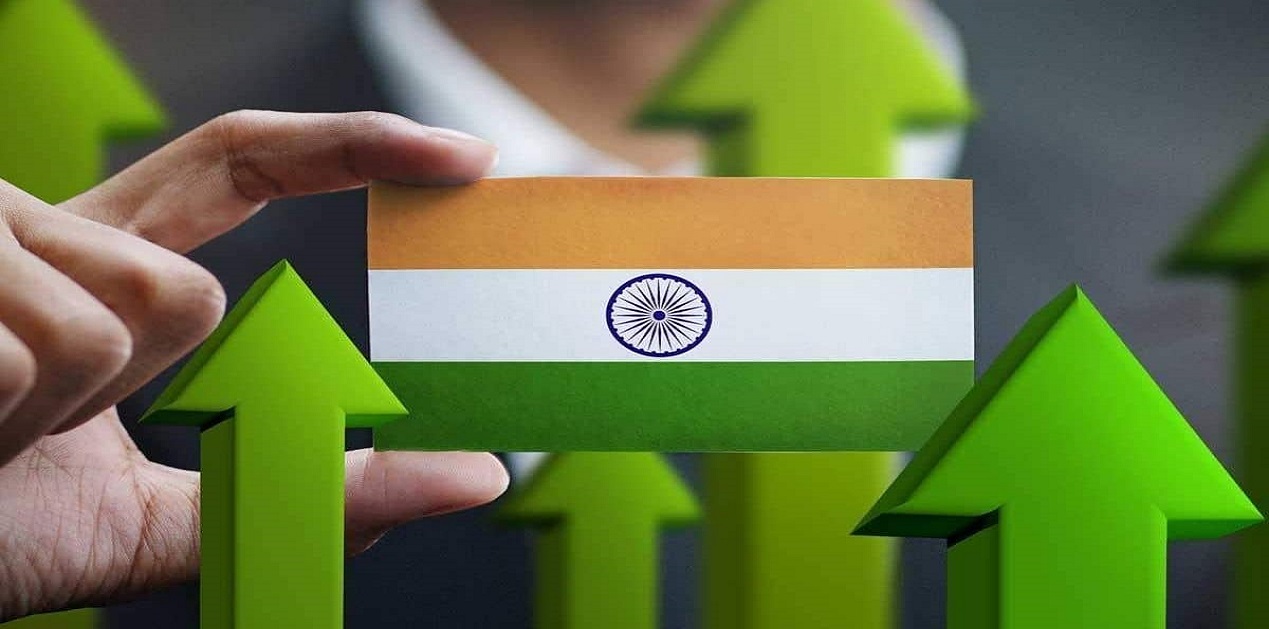Today’s security environment is utterly unpredictable, the world saw three black swan events in as many years –Covid19, Russia-Ukraine War and more recently Israel-Hamas War! In 2023 itself threats originated from state and non-state aggressors, as well as catastrophic natural and man-made disasters, refugees’ migration, terrorism, cyber-attacks and many other threats that chronically stress nations.
To prepare for the complexities and unpredictability, what is essential is resilience, which is the ability to resist and to prepare for threats and hazards, adapt to changing conditions, withstand and recover rapidly. Contextually, resilience is essential for planning, bringing together national capacities. National security requires robust civil-military capabilities that sustain governance and build and maintain operational readiness in the face of national emergencies, crises or conflicts. India has an adversarial neighbourhood, with disputed borders. While resilience needs be created for inexhaustible challenges and threats, three are being contemplated.
First is the issue of economic authoritarianism. Conservatively, it has over time become important for belligerent and adversarial states to avoid, as far as feasible, direct military confrontation or escalation, largely in consideration of the financial and political costs in an era of economic interdependence. Over the past few decades, with globalisation, creation of intricate supply chains and interconnectedness in the global financial markets, there has been a huge interest in the relationship between economic interdependence and political/ military conflict. It can be argued that economic interdependence would lower the possibility of war by the importance of trade and commerce over the alternative of aggression.
With strong economic ties, a non-military threat such as economic and trade sanctions can become credible. John Mearsheimer had stated that, “nations that depend on others for critical economic supplies will fear cutoff or blackmail in time of crisis or war.” Recent history provides evidence for it, as it pertains to China. Chinese economic authoritarian statecraft is often clearly intimated through a set of punishments, a kind of weaponisation of the economy and trade. Australia was exporting 160 million litres of wine to China in 2018, which was 40% of total exports. In Nov 2020, the Australian wine exports to China collapsed on Australia’s position on investigation of corona virus! China has a very large movie-goers market, which is why neither Hollywood nor Bollywood make any ‘bad Chinese guys’ movies! The reason is obvious enough, China has over 43000 screens and Bollywood movies like Dangal (Rs1300crore), Superstar (758 crore), Andha Dhun (Rs334 crore) and Bajrangi Bhaijan (292 crore) make quite an earning in China! There is but no hesitancy to make anti-Pakistan films like Mission Majnu, Phantom, Raazi, Gadar, Pathan, Uri-The Surgical Strike, Lakshaya, Bhuj - The Pride of India, etc!
In the past twenty years, Google, LinkedIn, Apple, Marriot, Mercedes-Benz, Zara, United Airlines and the National Basketball Association – all have acceded to censorship demands or apologised after a tweet or a map that did not align with CCP’s priorities. After Norwegian Nobel Committee awarded Liu Xiaobo the Nobel Peace Prize in 2010, salmon exports from Norway were denied. Global Times even referred to this as ‘sanctions.’ Similarly, instances of economic coercion have been chronicled like the ban on banana imports from the Philippines (Scarborough Shoal issue), ban on South Korea’s 112 Lotte Marts retail stores in China (THAAD issue) and H&M and Nike (Xinjiang cotton issue).[1] More recently, in December 2021, Lithuania had a diplomatic spat over relations with Taiwan, China had stopped all imports from Lithuania and pressured foreign manufacturers to stop using Lithuanian parts.
Ostensibly to protect national security, China also laid down restrictions on exports, like on gallium and germanium. China had also announced regulations to restrict exports of several key materials that are vital for electric vehicles, renewable energy, semiconductors and military tech. Hence economic authoritarian statecraft and coercion by China tantamount to weaponisation of trade!
Contextually, between India and China, economic interdependence would refer to the growing relationship on supply of necessary goods and services. Bilateral trade between India and China in FY 22-23 was over US$135.98 billion. In FY23 trade has crossed US$ 113 billion with India having exported 4,459 and imported 7,484 commodities from China. India largely imports capital goods (USD 47 billion in 2021), followed by intermediate goods (USD 30 billion), consumer goods (USD 9.4 billion) and raw materials (USD 1 billion), while it mainly exports intermediate goods (USD 2 billion) to China followed by raw materials (USD 6 billion), consumer goods (USD 3.4 billion) and capital goods (USD 2.4 billion). Accepting the need of creating resilience against trade dependencies, Niti Aayog is currently studying to develop a comprehensive action plan to bridge the trade deficit over time and align trading strategies with emerging geopolitical situation and potential risks to safeguard supply chains.[2]
Second is the issue of treachery by adversaries! It is argued that any principled conception of concerns of humanity and preservation of law of war for good faith by adversaries is highly elusive and leads to unregulated violence. Perfidy and treachery are among the gravest peace time and war accusations.
For two years Hamas by subterfuge kept its dastardly plans under wraps and convinced Israel that it did not want a fight. A careful campaign of deception ensured Israel was caught off guard when the Hamas launched its devastating attack on 07 Oct 2023, enabling a force using bulldozers, hang gliders and motorbikes to take on the Middle East's most powerful army. All this while Israel was led to believe it was containing a war-weary Hamas by providing economic incentives to Gaza workers. Hamas gave a public impression that it was not willing to go into a fight or confrontation with Israel. In fact, Fatah statement of June 2022 accused Hamas leaders of fleeing to Arab capitals to live in "luxurious hotels and villas" leaving their people to poverty in Gaza. Treachery in this context simply implied malicious deception to betray trust and confidence on 07 Oct 2023.
India too had her share of treachery. Prime Minister Vajpayee was idolised as a sincere peacemaker when he undertook the bus to Lahore in Feb 1999, was received by Prime Minister Nawaz Sharif and the units of Pakistan Army gave the Indian Prime Minister a guard of honour. All this while Gen Musharraf was treacherously executing the plans to occupy the heights of Kargil that led to a bitter war from May to July in the same year!
The year 2008 is another case in point in treacherous behaviour. India joined framework agreement between Turkmenistan, Afghanistan and Pakistan on a $7.6 bn gas pipeline project. A series of Kashmir-specific CBMs were also agreed to (including the approval of a triple-entry permit facility). In September 2008, President Asif Ali Zardari and Prime Minister Manmohan Singh announced the opening of several trade routes between the two countries. In October, cross-LoC trade commenced, even though it was limited to 21 items and for two days a week.
Meanwhile in July 2008, India had blamed Pakistan’s ISI for a bomb attack on the Indian embassy in Kabul, which killed 58 and injured another 141. The worst was on 26 Nov, when LeT terrorists landed in Mumbai from the sea, and attacked the Taj Mahal Palace & Tower, the Oberoi Trident Hotel, the Chhatrapati Shivaji Terminus, Leopold Cafe, Cama Hospital, Nariman House Jewish community centre, Metro Cinema and St Xavier’s College. More than 160 people were killed in the attacks. Ajmal Kasab of LeT was captured alive and spilled the beans in detail!
Similarly, after six Agreements and series of protocols on management of LAC, a series of talks of the principles and at ministerial levels over 25 years, PLA’s multiple and simultaneous incursions in Eastern Ladakh in May 2020, were akin to strategic level of deception.
Third, is the issue of conventional wars which globally, and even in India were considered passé, largely because of interdependence of economies. However, since 1945, there had been conventional state on state wars fought by regular armies, like the four Indian-Pakistani wars of 1947, 1965, 1971 and 1999. Next come the five Arab-Israeli wars of 1948, 1956, 1967, 1969-70, and 1973. Others were the Korean War of 1950-53; the India-China War of 1962; the Iran-Iraq War of 1980-88; the war between Ethiopia and Somalia (1978); the Chinese attack on Vietnam (1979); the Falklands War (1982); the Kosovo Campaign (1999); and, of course, the two wars against Iraq (1991 and 2003).
An estimated 3.6-3.8 million indirect deaths have taken place in post-9/11 war zones, including Afghanistan, Pakistan, Iraq, Syria, and Yemen. The total death toll in these war zones could be at least 4.5-4.7 million, though the precise mortality figure remains unknown. 38 million people have been displaced by the post-9/11 wars in Afghanistan, Pakistan, Iraq, Syria, Libya, Yemen and Somalia. Over a hundred sub-conventional wars waged by, or against, non-state organizations and terrorism ran parallel. The British, the French, the US (in Vietnam and Afghanistan), the Soviet (in Afghanistan) contested these with asymmetrically much weaker opponents and failed! And the currently raging Ukraine-Russia and Israel-Hamas Wars! In fact, more combatants/ non-combatants are losing lives daily in Gaza, than the two and half month India-Pakistan Kargil War!
When future historians and geo-strategists contemplate about wars, it will be to rediscover the continued utility of conventional military force, and that wars were nasty and brutish and greatly disruptive, and not necessarily short. India, hence, has not only to redefine wars and create resilience against as they constantly change character as a chameleon, but also for the shaping of the battlespace prior to wars. This ‘shaping of battlespace’ could amalgamate all or some of the economic authoritarian statecraft, deception/ treachery andutilisation of drones, cyber, space and electronic warfare, disinformation and cognitive warfare, rockets and missiles.
That brings to fore the issue of resilience. Undoubtedly pragmatism is imperative in understanding the complexities, opportunities and threats to Indian sovereignty and economic interests. To counter these threats, it is imperative that India develops and improves capacities to identify national vulnerabilities and potential threats. Again, newer ones can arise that cannot be fathomed currently. In doing so, Indian government agencies must fuse in, to share information in real-time, coordinate actions, pool-in resources where essential and demonstrate national will and capability to dissuade or deter threats by increasing the costs for the adversary. Indeed, the nation as a whole need to be taken into confidence of potential threats, especially pertaining to disinformation and cognitive warfare, to counter and mitigate such threats.
Among quotes ascribed to Sun Tzu, there is a relevant one: “The art of war teaches us to rely not on the likelihood of the enemy's not coming, but on our own readiness to receive him; not on the chance of his not attacking, but rather on the fact that we have made our position unassailable.”
End Notes
[1] Bethany Allen, Beijing Rules, China’s Quest for Global Influence, John Murray Press, 2023.
[2] The Economic Times, Niti Aayog initiates study to develop action plan to bridge action plan to bridge India, trade deficit with China, 25 Oct2023, accessed at https://economictimes.indiatimes.com/news/economy/foreign-trade/niti-aayog-initiates-study-to-develop-action-plan-to-bridge-indias-trade-deficit-with-china/articleshow/104695895.cms
(The paper is the author’s individual scholastic articulation. The author certifies that the article/paper is original in content, unpublished and it has not been submitted for publication/web upload elsewhere, and that the facts and figures quoted are duly referenced, as needed, and are believed to be correct). (The paper does not necessarily represent the organisational stance... More >>
Image Source: https://edtimes.in/wp-content/uploads/2021/09/economy-mqinn-1.jpg










Post new comment